Live Presentation: June 28, 2023 10:00 AM – 3:00 PM EST
Abstract
The basics of occupational electrical safety involves compliance with regulations, codes and standards that provide minimum requirements for safe installations and safe work practices. This tutorial discusses four evolving and leading edge developments in advanced safety management with significant potential for accelerating further improvements in prevention of serious injuries and fatalities from electrical hazards. These topics are: 1) the benefits of moving beyond simple compliance and incorporating a risk based approach to reduce residual risk, 2) system safety engineering as an approach integrating application of engineering and management principles, criteria, and techniques to achieve risk as low as reasonably practicable, 3) safety management systems, and 4) the growing movement in safety management focusing on hazards with high potential for life changing injury and fatality. Case histories will provide practical examples that attendees can use to assess and reduce risk of serious injuries.
Outline
I. Establishing Context (20 mins)
a. Our Electrical World – the Impact of Global Electrification
b. Injury statistics
c. Electrical Safety Basics
II. Limitations of Simple Compliance (20 mins)
a. Historical evolution of occupational safety
b. The (undesirable) effect of a compliance-based safety culture
c. Hidden danger in Residual Risk
III. Advanced Concepts that can reduce electrical injury risk (20 mins)
a. Risk-based vs simple compliance
b. Low frequency/high consequence risks
c. System Safety and Occupational Health & Safety Management Systems Standards
d. Engineering solutions
10 minute break
IV. Demonstrated results of a risk-based approach (20 mins)
a. Global performance
b. One company’s experience
V. The lens of system safety (20 mins)
a. Learning from exotic hazards
b. Concepts for occupational electrical safety
VI. Prevention through Design and the Hierarchy of Controls (20 mins)
a. Historical basis
b. Modern view
10 minute break
VII. Serious Injury and Fatality Prevention (20 mins)
a. Separating frequency and severity
b. Avoiding an Illusion of Control
VIII. Questions & Wrap Up (20 mins)
Learning objectives
After completion of the tutorials, participants will:
- Be able to describe the benefits of engineering risk controls as compared to administrative controls
- Be able to identify the limitations of a compliance – based safety culture
- Be able to apply risk assessment to reduce residual risk of a compliance only approach.
- Be able to differentiate and manage low frequency/high consequence safety risk from high frequency/low consequence safety risk.
Instructor
H. Landis “Lanny” Floyd II, PE, CSP, CESCP, CUSP, CMRP, CRL, Life Fellow IEEE
Electrical safety expert, consultant, author, speaker and educator
For more than 50 years, Lanny has pushed the envelope in managing the risk of electrical injuries in the workplace. His 45+ year career with DuPont focused on electrical safety in the construction, operation and maintenance of DuPont facilities worldwide. His responsibilities included improving management systems, competency renewal, work practices, application of electrical safety technologies, and reliability of equipment impacting risk of electrical injuries. In 2013, the University of Alabama at Birmingham invited him to join the faculty of the Advanced Safety Engineering and Management program in the School of Engineering. In this capacity, he created and teaches the course Electrical Systems Safety. Lanny has published more than 75 papers on various topics related to electrical safety. Among the awards he has received for his contributions and leadership for electrical safety include the IEEE Medal for Engineering Excellence and the IEEE Richard Harold Kaufmann Award. Lanny shares his career experience by speaking at conferences, conducting webinars, and through publications in industry magazines and professional journals.



